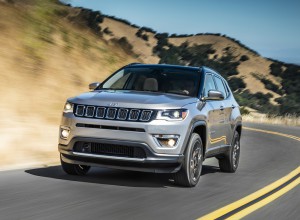
While GM sales were down 4.7% for June, its wildly popular crossover, the Equinox, saw sales jump 36%.
Sales of new vehicles continued to sputter in June with General Motors, Fiat Chrysler and Ford reporting sales declines while rivals such Toyota, American Honda and Nissan posted meager gains as the industry struggled to match last year’s record pace.
Fiat Chrysler Automobiles N.V. reported sales dropped 7% in June compared with sales in June 2016. Much of the decline could be traced to a decline in sales of Jeep-brand products. With key model changeovers underway, Jeep sales dropped 11% in June and are down 13% during the first half of 2017. So far this year, FCA sales have dropped 7%.
In June, retail sales of 139,947 units were down 5% compared with the same month in 2016, and represented 75% of total sales. In line with FCA’s strategy to reduce sales to the daily rental segment, fleet sales of 47,401 units were down – as expected – 15% year over year. The largest planned volume reduction in June fleet sales came from the Jeep brand, which reduced its fleet sales number by 49% year over year.
General Motors reported sales declined by 4.7% from the same period last year. However, in the fastest growing U.S. retail market segment, GM’s crossover retail sales were up 23%, due largely to the strength of Chevrolet Equinox, which were up 36%. Buick’s U.S. retail sales were up 6%.
“U.S. total sales are moderating due to an industrywide pull-back in daily rental sales, but key U.S. economic fundamentals clearly remain positive,” said Mustafa Mohatarem, GM chief economist. “Under the current economic conditions, we anticipate U.S. retail vehicle sales will remain strong for the foreseeable future.”
GM’s incentive spending as a percentage of average transaction prices was 12% in June, equal to the company’s 2016 calendar year average, and lower than any domestic and many Asian competitors, according to estimates by J.D. Power & Associates, while GM’s average transaction price were $35,657, up nearly $400 per vehicle.
(New car sales expected to continue sliding. Click Here for the story.)
Ford Motor Co.’s June U.S. sales declined by 5.1% percent compared to last year. Retail results were flat versus last year’s retail results but fleet sales in June dropped 13.9%, Ford reported. For the first six months of 2017, Ford sales were down 3.8%.
Ford’s June average transaction pricing grew $1,800 another month of significant increase compared to the overall industry gain of $520.
Toyota Motor North America Inc., reported a sales increase 2.1% on both a volume and daily selling rate. For the first half of the year, TMNA reported sales declined 3.6% versus the same period in 2016.
“The auto industry has cooled off compared to last year’s record-breaking pace,” said Jack Hollis, group vice president and general manager, Toyota division. “In the first half, however, Toyota held its No. 1 retail brand status, as we were able to outperform the industry, thanks to our incredible dealers gaining momentum in the second quarter, especially in light trucks and SUVs.
“We aim to carry that momentum for a strong second half, as we lead the charge back into the midsize segment with the all-new Camry, and continue to benefit from improved inventory in our light trucks, including the new C-HR.”
(Click Here for details about how used car sales will keep dealers afloat during new car downturn.)
Lexus posted June sales of 24,395 units, down 5.4% on a volume and DSR basis.
American Honda reported an increase in sales of just under 1% for Honda and Acura models thanks to a strong showing by the Acura brand.
Honda Division sales were down 1.3%. On the other hand, Acura Division sales gained 23.7% in June.
Volkswagen of America Inc. reported a 15% increase over June 2016. For the year, VW sales are up 8.2 in year-over-year sales through the first half of 2017 as the maker continues to recover from the blow it took from its diesel scandal. Audi of America reported a June sales increase of 5.3%. June was the 78th consecutive month of record sales for Audi of America and the third-best sales month in the brand’s U.S. history.
Nissan Group today announced a sales increase of 2% over the prior year and a June record. Mazda sales were down 14.7% for the month and are down more than 8% for the first six months of the year.
“June’s sales number reaffirms that the U.S. vehicle sales cycle is in a post peak phase,” said Charlie Chesbrough, senior economist for Cox Automotive.
(To see why most Americans can’t afford a new vehicle, Click Here.)
“The U.S. economy remains strong – confidence is high, unemployment is low – and this will continue to support vehicle demand over the near-term. But higher interest rates and uncertainty around fiscal policies will slow economic growth, and may become headwinds for automotive sales. Cox Automotive expects 2017 light vehicle sales to finish near 17.1 million – down from last year’s record, but still a robust market,” he added.

